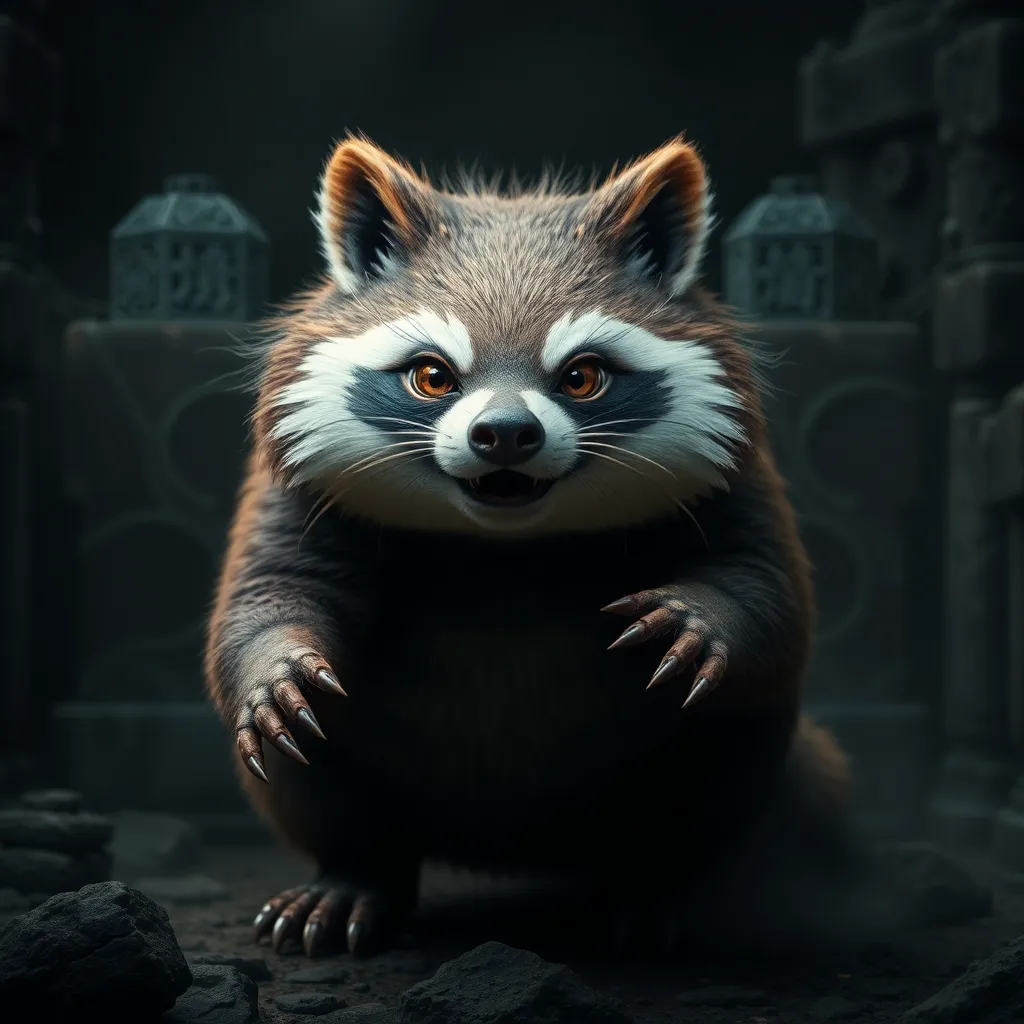The Shapeshifting Tanuki: Masters of Illusion in Japanese Mythology
I. Introduction to Tanuki in Japanese Culture
Tanuki, often referred to as the Japanese raccoon dog, holds a significant place in Japanese culture and mythology. These creatures are not just animals; they embody a unique blend of folklore, spirituality, and cultural identity. In Japanese, the term ‘tanuki’ (狸) refers specifically to the animal, but it has also come to symbolize characteristics such as adaptability and cunning.
Throughout history, tanuki have been celebrated in various forms of folklore, literature, and art. They are often depicted as playful and mischievous beings capable of transforming themselves into other creatures or objects. This shapeshifting ability has made them a popular subject in contemporary culture, reflecting their enduring significance in Japan.
II. Historical Origins of Tanuki Legends
A. Early references in ancient texts
The origins of tanuki legends can be traced back to ancient Japanese texts, where they are often mentioned alongside other mythical creatures like foxes (kitsune) and spirits (yokai). The Konjaku Monogatari, a collection of tales from the late Heian period, includes stories featuring tanuki as magical beings that can deceive humans.
B. Evolution of tanuki myths through the ages
As Japan transitioned through various historical periods, the portrayal of tanuki evolved. During the Edo period (1603-1868), they became celebrated figures in popular culture, often depicted in woodblock prints and kabuki theater. The shifting societal values and the rise of merchant culture influenced how tanuki were perceived, leading to a more playful and less malevolent representation.
III. Characteristics and Traits of Tanuki
A. Physical appearance and attributes
Tanuki are characterized by their unique physical features. They possess a distinctive appearance that combines traits of both raccoons and dogs. Key attributes include:
- Short, stocky bodies with thick fur
- Facial markings resembling a mask
- Large, expressive eyes
- Fluffy tails that often curl over their backs
B. Behavior and personality traits in mythology
In mythology, tanuki are known for their playful and mischievous nature. They are often depicted as friendly creatures who enjoy tricking humans, but they also possess a deeper wisdom. Their duality as both tricksters and protectors reflects the complexities of nature and the human experience.
IV. The Art of Transformation
A. Explanation of shapeshifting abilities
Shapeshifting is one of the most prominent traits associated with tanuki. According to folklore, they have the ability to transform into various forms, including:
- Other animals, such as foxes or even humans
- Inanimate objects, like a teapot or a rock
- Natural elements, such as trees or water
This ability is often portrayed as a means of escaping danger or playing tricks on unsuspecting humans.
B. Common forms and disguises used by tanuki
Tanuki are frequently depicted in their transformation sequences, using their abilities to create humorous or poignant situations. Common forms include:
- A wealthy merchant to trick others into giving them money
- A beautiful woman to seduce and deceive
- A mundane object to blend into the environment
V. Tanuki as Tricksters and Illusionists
A. Famous tales featuring tanuki’s cunning and deception
Numerous stories illustrate the cunning nature of tanuki. One popular tale involves a tanuki who transforms into a rice ball to trick a hungry traveler. Once the traveler attempts to eat the tanuki, it reveals its true form, leading to a humorous and chaotic encounter.
B. Symbolism of trickery in Japanese culture
Tanuki embody the concept of trickery, which is a valued trait in many cultures, including Japan. Their ability to deceive serves as a reminder of the fluidity of reality and the importance of adaptability. Trickery, in this context, is not merely about deceit, but also about survival, creativity, and the playful spirit of life.
VI. Tanuki in Art and Literature
A. Representation of tanuki in traditional and modern art
Tanuki have been a prominent subject in Japanese art for centuries. Traditional representations can be found in:
- Woodblock prints (ukiyo-e)
- Paintings
- Ceramics
Modern depictions continue to thrive in various art forms, showcasing their enduring appeal.
B. Notable literary works featuring tanuki characters
In literature, tanuki are central figures in many folk tales and children’s stories. A notable work is The Tale of the Shapeshifting Tanuki, which explores themes of identity and transformation through the adventures of a clever tanuki.
VII. Tanuki in Modern Popular Culture
A. Influence on anime, manga, and video games
In recent decades, tanuki have become iconic figures in anime and manga. They often appear as side characters or comedic relief, showcasing their playful nature. Popular titles include:
- Pom Poko – an animated film by Studio Ghibli that centers around a group of tanuki.
- Animal Crossing – featuring characters inspired by tanuki, such as Tom Nook.
B. Tanuki’s role in contemporary Japanese identity
Tanuki continue to hold a place in contemporary Japanese identity, representing the connection between traditional folklore and modern societal values. They are often seen as symbols of resilience and adaptability in a rapidly changing world.
VIII. Conclusion: The Enduring Legacy of Tanuki
A. Reflection on the significance of tanuki in cultural storytelling
Tanuki serve as a bridge between the past and present, embodying the complexities of human nature and the natural world. Their stories remind us of the importance of creativity, humor, and resilience.
B. Future of tanuki mythology in a global context
As globalization continues to influence cultural narratives, the mythology of tanuki is likely to evolve further. Their unique characteristics and stories have the potential to resonate with audiences worldwide, ensuring that the legacy of these shapeshifting tricksters endures for generations to come.



